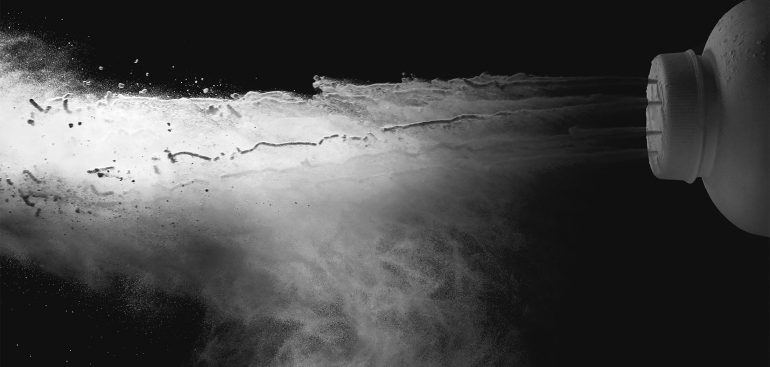While controversy surrounds the use of talcum powder, recent high-profile court cases have raised concerns that women who use talc-based powder around their genital area may be at a risk for ovarian cancer.
Meanwhile, a new study, one of the largest on this topic to date published in the medical journal JAMA says that might not be the case.
The study found that there was no statistically significant association between genital talc use and ovarian cancer, but notes that it may have been “underpowered” to identify a small increase in risk in part because there weren’t many cases of ovarian cancer among the women studied.
Researchers, however, came to this conclusion looking at large number of patients, using pooled data from 252,745 United States women with a median age of 57 years.
Of those women, 38 percent said that they used powder in their genital area, 10 percent said they had been doing so for at least 20 years and 22 percent reported using it at least once a week.
Following up after about 11 years, 2,168 had developed ovarian cancer. That broke down to 61 cases per 100, 000 person year’s among those who had ever used talc around their genital areas and 55 cases per 100,000 person years among those who didn’t, the study stated.
Although, the study says there is a possible association between powder and ovarian cancer among women who had no history of hysterectomy or tubal ligation, the finding should be considered only exploratory and hypothesis generating.
“If future research shows this association, there could be some truth to the hypothesis that the powder may be irritating or inflaming the reproductive tract. There is a relationship between pelvic inflammatory disease and ovarian cancer, but more research is needed to draw any conclusion about this possible connection.
This observational study has limitations. The way the groups assessed exposure and frequency of use varied, so it’s hard to know if there is a connection to how much a person uses the powder and ovarian cancer. The data didn’t capture what types of powder women used. All four sets of data included mostly white, well-educated women, half of whom had BMI less than 25, meaning they were not overweight, so it is not clear if this result can be generalised to other demographics.” The study stated.
Kevin McConway, an emeritus professor of applied statistics at the Open University, said in a statement from the Science Media Centre in the United Kingdom said: “One thing this research clearly demonstrates is how difficult it is to tie down whether something like this is indeed a risk factor for cancer. Despite this being a good, competent, careful study involving over quarter of a million women; it still leaves room for doubt about the association, if there is one, between using powder in the genital area and ovarian cancer.
“There is still uncertainty about whether any such association exists. If it does exist, there is uncertainty about whether the powder itself is what causes any increase in cancer risk. And there’s also uncertainty about what the size of the risk increase is, if it there is one.”
McConway adds: “But what the research does establish, I’d say, is that if using talc or other powder on that part of a woman’s body does really increase the risk of ovarian cancer, the increase in risk is likely to be small. I’m not a woman, so can’t have concerns about my own health in these respects — but if I were a woman, this wouldn’t be high on my list of worries.”
Meanwhile, concerns about a link between talc and ovarian cancer started surfacing around 1971, when a small group of scientists wrote about finding talc particles deeply embedded in ovarian and cervical tumor tissue.
The study concluded that it is “impossible to incriminate talc as a primary cause of carcinomatous changes, based solely on what was described in the study; however, the possibility that talc may be related to other predisposing factors should not be disregarded.”
Studies over the years have shown mixed results, as some study reviews show a moderate risk, a few show that it “does not appear to influence cancer risk.”
Most are population-based studies and cannot prove a direct cause-and-effect relationship.
In general, cancer causes are tricky to prove, since it takes time for cancer to develop and it can be influenced by a wide variety of factors, according to researchers.



